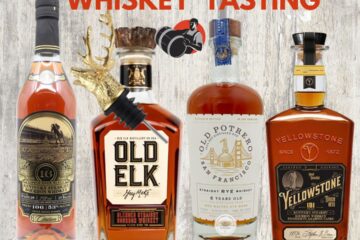1. Cleebourg Alsace Gewurztraminer Prestige
Cooper’s Price $15.99
Located 60 kilometers north of Strasbourg, Cave de Cléebourg’s vineyards cover almost 200 hectares of the Northern Vosges Mountains in the Alsace region of France. Wine production was introduced into the Cléebourg area by Dominican monks from neighboring Wissembourg as early as the 9th century A.D. Except for the phylloxera outbreak that swept through Europe in late 1800s and the devastation caused by retreating armies in the last days of World War II, wine production has continued to this day.
Many of Cave de Cléebourg’s vineyards share favorable south and southwest facing slopes in the villages of Cléebourg, Rott, Oberhoffen, Steinseltz and Riedseltz. Soil types in the region range from sandy loam to clay to marl.
Profile: The nose is aromatic and intense, fresh and mineral-y. Notes of quince, golden plum and pineapple combined with touches of citrus, lychee, spice and flint. The palate is fruity, well-balanced, and offers roundness, good structured acidity, and racy minerality. Ripe lemon and zest and notes of lychee, apple and hints of peach. Good length on the finish.
2. Saget Perriere “La Petite Perriere” Pinot Noir
Cooper’s Price $11.99
Since 1790, generations of the Saget family have worked to create the signature Saget La Perrière wines, melding the perfect balance — a blend of richness and elegance. The new designation of “Vin de France” offers the opportunity to explore and discover the ideal balance between the fruitiness of varieties grown in the south and their acidity when produced in the northern region (Loire) and thus La Petite Perrière wines were created. The Vin de France designation is utilized for the entire La Petite Perrière range.
Largely sourced from estate vineyards in Touraine (Loire Valley) and part of the blend is sourced from the South of France. The 2015 vintage had lower yields, due to adverse climate conditions (heavy rains, a chilly spring, lack of sun and dry weather during the harvest time) and thus the growing cycle was delayed. However, these conditions gave a wine with excellent acidity. This vintage is well-balanced with intense aromatic richness with silky tannins and good aging potential.
Beautiful ruby mingled with hues of garnet. On the nose, aromas of black fruits such as blackberry and blueberry. The palate is fleshy at point of entry then full, ample and generous, flowing into a crisp cherry-driven finish with an ultra-fresh sensation. A mouth-filling wine offering up the generosity and typicality of a Pinot Noir that has just hit maturity.
3. Walter Scott Dubay Vineyards Pinot Noir
Cooper’s Price $49.99
Started in 2008 by partners Ken Pahlow and Erica Landon after years of successful careers in the Oregon Wine Industry. Pahlow has worked in sales and production at St. Innocent Winery and managed sales and distribution in the Northwest for Evening Land Vineyards. In 2009, he joined the harvest team at Patricia Green Cellars and the winery crew there helped launch the Walter Scott label.
Willamette Valley AVA was established in 1983, and it is the oldest appellation in Oregon. Oregon’s modern wine industry began in the Willamette Valley in the 1960s when artists, vagabond winemakers, and U.C. Davis oenology graduates looking for new territory started their own, small, off-the-grid wineries. The appellation is the state’s largest, and it extends 175 miles from Columbia River on the Washington/Oregon border. The Willamette River runs through the area, helping to give the appellation a mild year-round climate.
Moderate garnet color in the glass. Aromas of well-ripened blackberry, cassis, Asian spices, nut oil and vanilla in a moderately rich styled wine with impressive balance and a fulfilling finish replete with exuberant blackberry, blueberry and pomegranate fruit. Somewhat unyielding at this young age, but the charm and pedigree is evident. Considerably better when tasted the following day from a previously opened and re-corked bottle, with aromas of exotic spices, lush fruit flavors, and good cut on the juicy finish.
4. Castello de Bossi Chianti Classico
Cooper’s Price $21.99
The winemaking revolution which in the last few years has taken place in Chianti Classico and in Tuscan winemaking in general could hardly have left untouched a historic winery estate such as Castello di Bossi. Today the winery covers 650 hectares, on which 124 are under vine, planted to Sangiovese, Cabernet Sauvignon and Merlot. Their roots go deep into soils that are predominantly tuffs, yellow clays, silt-sand, and crushed rock, at an altitude of about 350 meters. These conditions, plus a unique microclimate and optimal exposition to the sun, yield grapes that are perfectly ripe, healthy, and of great character. The grapes ferment in temperature-controlled stainless steel tanks fitted with the most advanced processing systems. The wine then matures and rests in the barrel cellar, with over 1,000 light-toast French oak barrels.
Deep, ruby-red in color, this Chianti Classico offers aromas of ripe cherries and red plums, with subtle notes of toasted vanilla beans and purple flowers. On the palate, the wine displays a superbly structured character with bright acidity and a pleasantly savory finish.


